|
九大景點
在本站,我們也可以觀察到一些人工建物在斷層帶裡受到潛移作用而持續擠壓變形,造成圍牆、房屋傾斜變形及破裂。本解說站所觀察到的現象與景點2解說站(曾宅)類似,除了斷層帶的逆衝擠壓外,斷層上盤的抬升及褶皺,造成上盤的人工建物比下盤建物更容易變形破裂。 地質學家也利用槽溝的研究,來分析斷層帶褶皺的地層。在地下數米(一般約三至十米不等)的槽溝中,可以更仔細地觀察斷層所造成的變形構造。同時並嘗試利用地層定年來推測斷層的抬升速率及發生古地震的年代。 At this site, we can observe different deformation features on the human constructions within the surface fault zone, similar to those at the site No. 2 in this park. For instance, a tilted, fractured retaining wall is deforming mainly due to shortening strain in the fault zone (Fig. 1) and houses have been fractured probably by combination of surface shortening and uplift and folding in the hanging wall of the fault. Geologists also work on subsurface strata and deformation structures, for example in trenches, which usually are excavated to a depth of 3-10 meters (Fig. 2).Based on analyses of geological structures in the trenches, combining with dating on the ages of the strata, scientists try to estimate the relative uplift rate of the hanging wall as well as the time of the plausible past few large earthquakes occurred on the Chihshang fault. 斷層帶的擠壓破裂Surface ruptures on construction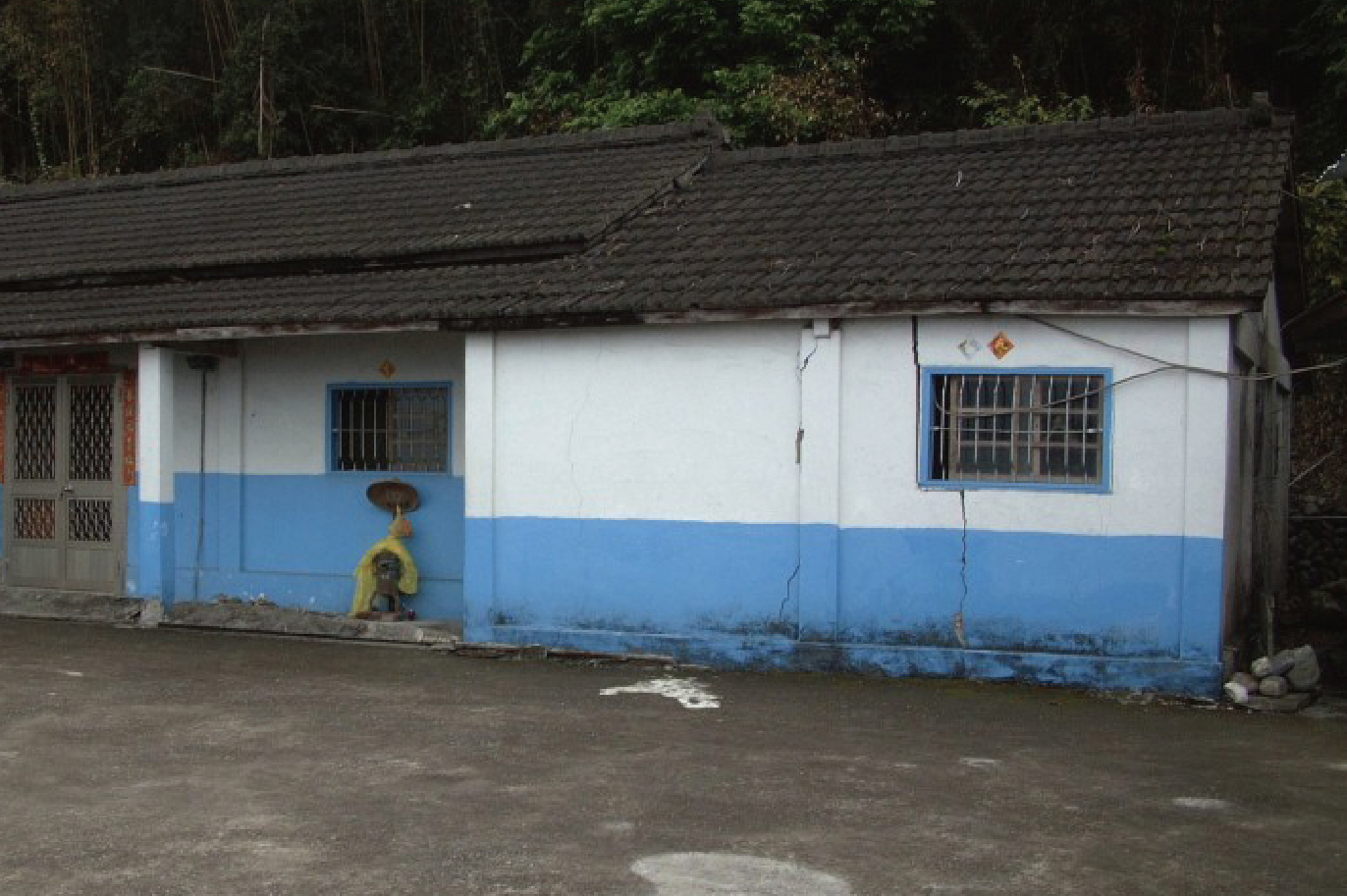
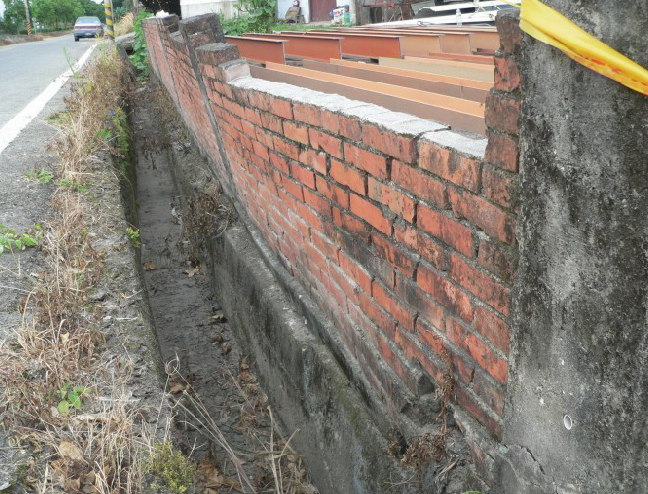
圖一、本解說點可觀察到受斷層帶擠壓抬升而變形的例子。左上、道路東側圍牆被抬升傾斜及擠壓而破裂。左下、房屋受擠壓而產生變形破裂。右、斷層上盤抬升造成變形之解說示意圖(與景點2曾宅之變形相同的機制)。
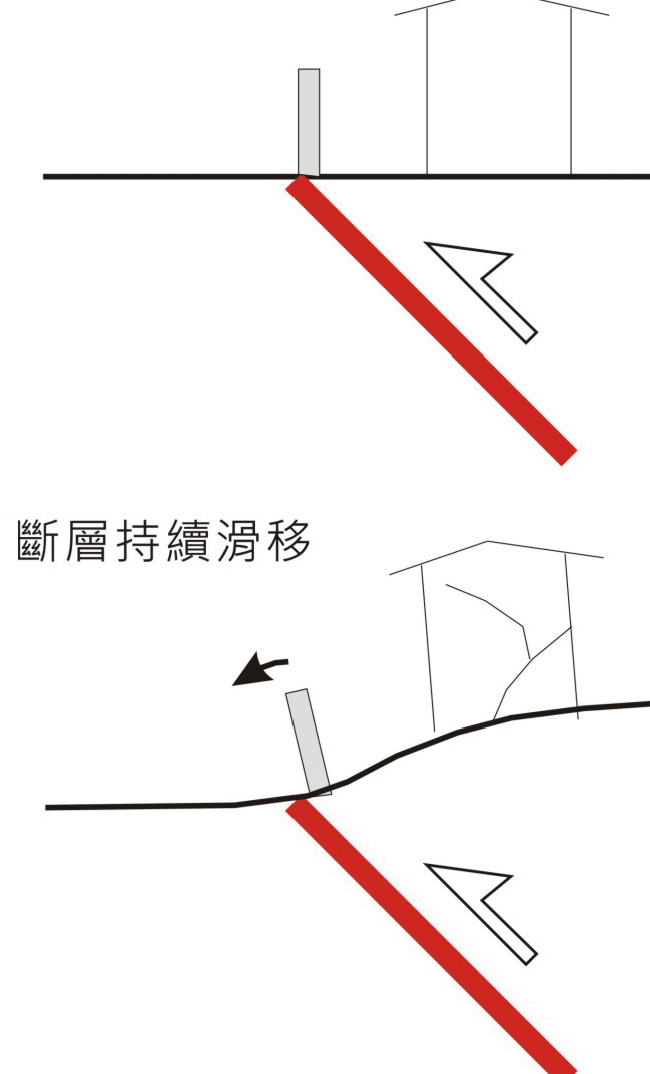
槽溝開挖古地震研究Excavation and Paleoseismological study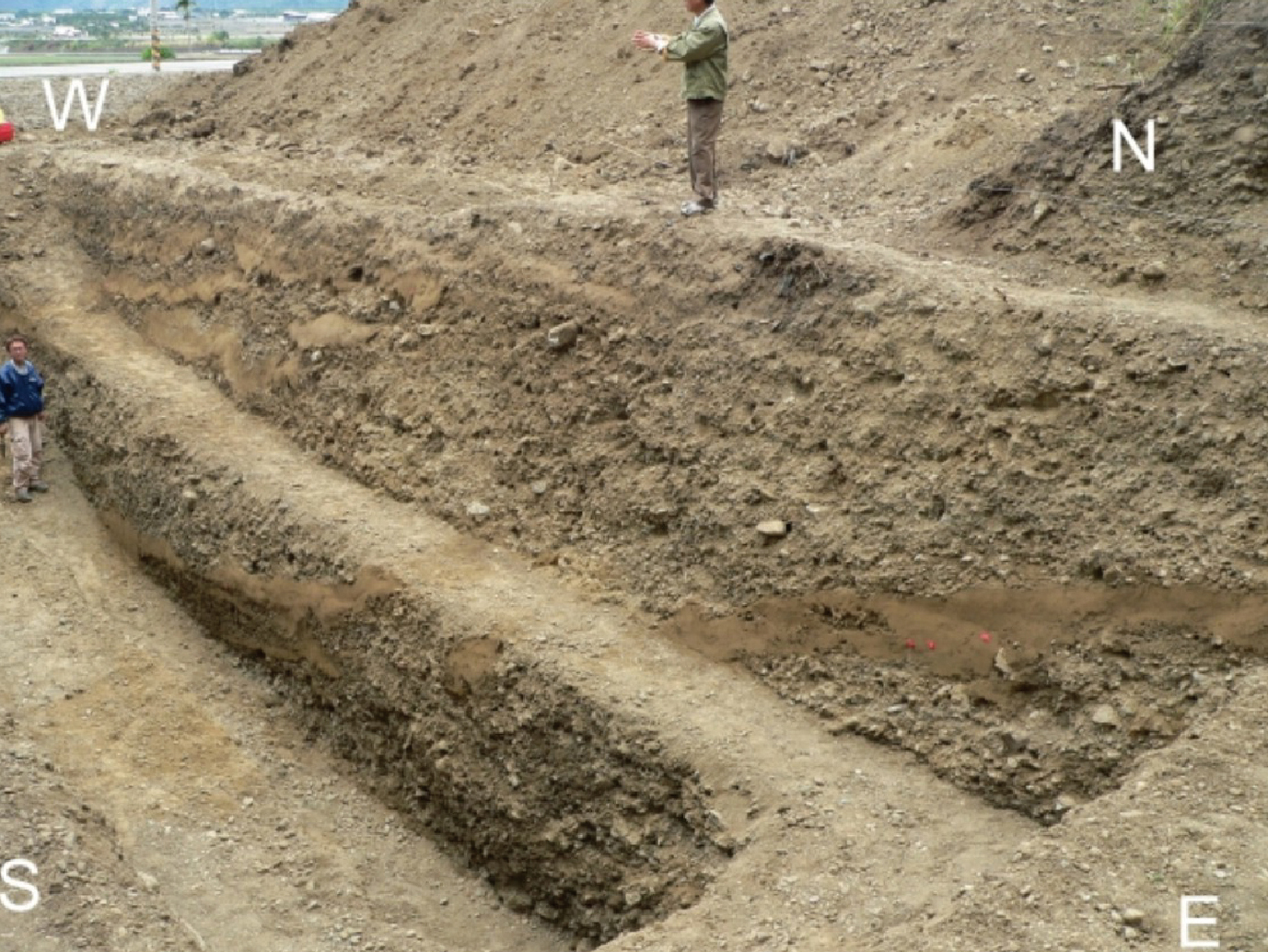
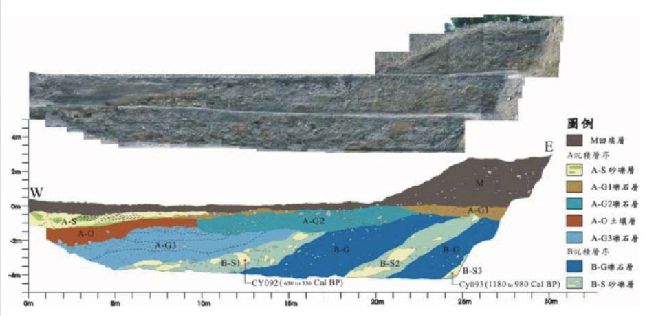
圖二、在本站附近,曾利用槽溝開挖來分析研究斷層帶的地下變形構造,並利用地層定年估計斷層抬升速率及古地震發生的年代。左上、槽溝開挖之實況。下、地下地層呈現不等量傾斜(稱為:生長褶皺或生長斷層)。右上、槽溝開挖位置之整體地質剖面解釋示意圖。
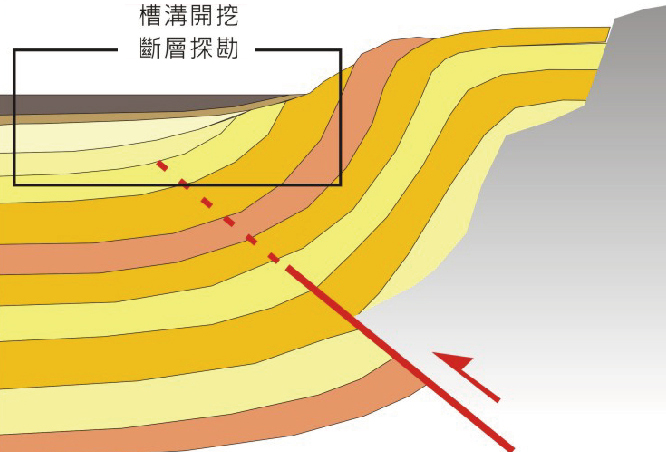
|


